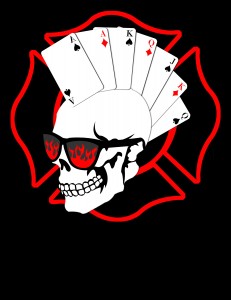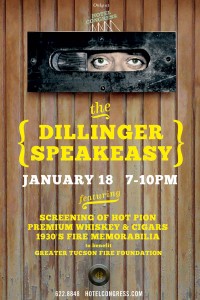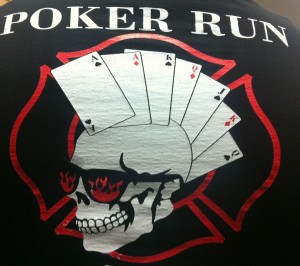Get the latest news from the Greater Tucson Fire Foundation!
Tag Archives: Tucson Firefighters
Tucson Fire Foundation’s 2013 Poker Run…Get Involved!
 The GreaterTucson Fire Foundation(GTFF) is proud to invite you to get involved with our 2nd Annual Poker Run, which will be held on Saturday, May 18, 2013. This motorcycle ride will travel across the north and east side of Tucson, with stops at various community fire stations that will help raise funds to benefit firefighter health and wellness. We encourage you to get involved!
The GreaterTucson Fire Foundation(GTFF) is proud to invite you to get involved with our 2nd Annual Poker Run, which will be held on Saturday, May 18, 2013. This motorcycle ride will travel across the north and east side of Tucson, with stops at various community fire stations that will help raise funds to benefit firefighter health and wellness. We encourage you to get involved!
How? There are several different ways!
You could participate in the Poker Run as a rider. Registration packets are available for download below. Simply print it out, fill out the required forms, and send in the information as instructed on the form. Online registration will also be available soon.
A variety of sponsorship opportunities are also available! Sponsorship of this event supports community firefighters and provides you and your business inclusion in this unique, community-based event. To learn more, download the sponsorship package below or email inquiries to pokerrun@topcu.org.
Prefer to just volunteer your time to help the event run smoothly? Email volunteer@topcu.org with your contact information!
The most valuable equipment found in the fire station is the firefighter. Despite the advances in safety and personal protection, approximately 100 U.S. firefighters die on the fire ground each year, many from cardiac-related issues. Half of those deaths, however, are preventable with adequate wellness and fitness programs.
In the past year alone, Greater Tucson Fire Foundation efforts have effectively helped save at least five firefighters’ lives within local jurisdictions – all of whom showed symptoms of life threatening, undiagnosed heart disease.
The Foundation’s 2013 Firefighter Health and Wellness Initiatives include:
Firefighter Cardiac Disease Assessment Protocol
Reducing firefighter injuries through Peer Fitness Trainer Certification
Campaigns to combat potentially deadly, antibiotic-resistant infectious bacteria, such as MRSA
Identifying effective coping mechanisms for sleep deprivation in public-safety jobs
Providing important mental health and wellness services for firefighters and their families, including those who work for smaller agencies that might not be able to afford access to these services.
We invite you to help the Foundation “take care of those who take care of us.”
If you have questions about this event or our program offerings, please email pokerrun@topcu.org. We appreciate your continued support of our programs!
TO REGISTER:
(2013RegistrationForm.pdf, PDF, 163KB)
SPONSORSHIP INFORMATION:
Poker Run Registration….Coming Soon!
Due to technical difficulties the Poker Run registration is not live on the website, but we should have forms available on the blog soon and full web registration available too! Stay tuned…..
Thank you for supporting the Greater Tucson Fire Foundation!!
(gtff.2013.poker_.run_.final_.poster.bleeds.pdf, PDF, 2.63MB)
GTFF February 2013 Newsletter
Check out this month’s Greater Tucson Fire Foundation Newsletter. This month features a comprehensive compendium of activities Fire Foundation related from December and January.
Do you have your tickets yet?
Less than two weeks until “Dillinger Days” at Hotel Congress! On Friday, Jan. 18, the hotel hosts a private, Prohibition-era Speakeasy – replete with premium whiskey tastings, fine cigars and premium craft beer from Borderlands.
The Speakeasy opens its doors at 7 p.m., with tickets $25 at the door. For a discount, purchase online at www.hotelcongress.com. All Speakeasy proceeds benefit the Greater Tucson Fire Foundation.
“Dillinger Days” resumes Saturday, Jan 19 – with an afternoon carnival, live music, vintage cars, hotel tours and historic reenactments of the Dillinger capture. It’s fun, family friendly, and free. Hotel Congress is located downtown, at 311 East Congress St., right across from the historic Rialto Theater.
Mark Your Calendars!!!
Image
The Greater Tucson Fire Foundation is excited to announce two events for 2013!
Dillinger Days at Hotel Congress
January 18 & 19, 2013
GTFF December 2012 Newsletter
Greater Tucson Fire Foundation Focuses On Health Initiatives
In its 2013 Strategic Plan Initiatives, the Greater Tucson Fire Foundation has placed an emphasis on the health of firefighters. Some of these initiatives include supporting cardiovascular and sleep-deprivation studies, offering mental, emotional and psychological health resources, and generating funding for Peer Fitness Trainers (PFT) to prevent on-the-job injuries.
Recently, strides were made on the Cardiovascular Initiative, as reported by the Arizona Daily Wildcat:
Dr. Wayne Peate, an associate professor at the College of Public Health, proposed that the Greater Tucson Fire Foundation look at funding a study where at-risk firefighters receive an ultrasound to look for.
“The study that Dr. Peate did through the UA College of Public Health demonstrated the efficacy of the ultrasound to the point where now we want to do it with the firefighters,” said Mike McKendrick, chairman of the Greater Tucson Fire Foundation. “The added hope is that this will become the national standard.”
The study, which ended in 2011, found that the ultrasound machine is more effective than the heart CT scan in detecting blockages in the arteries, and that with the ultrasound there is no radiation, Peate said.
How has the Greater Tucson Firefighting Community benefitted from this study? UA News goes on to report:
As a result of the study, the Greater Tucson Fire Foundation decided to provide funding for an ultrasound machine in the firefighter’s clinic in Tucson. The machine will be placed
in the clinic by December, in hopes that it will benefit firefighters.
“What the foundation looks at is if we have just one save, it’s worthwhile,” McKendrick said. “The save could be really saving a firefighter’s life, or even letting a firefighter know that he or she has potential for that cardiac disease so they can go to their primary care physician and be treated.”
The study showed there was a cheaper, more accurate and less dangerous way of detecting abnormalities than with other types of technology, Peate said. Early intervention can help firefighters to stay healthy in their careers, he added.
“If we can get it ahead of time, let the firefighter know there’s a problem, then we can treat it,” McKendrick said. “There’s really not a lot more traumatic than a firefighter having a heart attack at work. You have to save the person there to do the saving, and that’s very traumatic.”
Brittny Mejia I Arizona Daily Wildcat
For the full article, go to: http://www.wildcat.arizona.edu/article/2012/11/ultrasound-
firefighters-clinic-ua-study-111912. For more information on the Greater Tucson Fire Foundation and its initiatives: www.tucsonfirefoundation.com.
From the Archives…
Tucson’s first fire chief also a utility pioneer!
Many local firefighters know that Frank E. “Red” Russell was the city’s first fire chief, elected in 1898 to oversee the newly formed Tucson Volunteer Fire Department. What is less known was that he was also general manager of the Tucson Gas, Electric, Light and Power Co. – the precursor of today’s Tucson Electric Power (TEP).
Russell, a native Englishman who owned a local machinery repair and bicycle shop, was also manager of Tucson Rapid Transit Co. The 19th century transit company, now known as Sun Tran, oversaw operations of the city’s streetcar system on Congress Street (which, in the early 1900s, became rather infamous for frequent tramcar derailments.)
Details of Chief Russell’s life and work can be found in the online archives of the Greater Tucson Fire Foundation. The collection of historic documents has been compiled by Al Ring, a local historian, former volunteer firefighter and friend of the Tucson Fire Department.
By piecing together various documents, photos, newspaper articles and other items from the archives, one learns that Tucson’s first fire chief helped establish Armory Park and the Temple of Music and Art, generated funding to build the city’s first sewage system, and invented a “gas pressure device” following a local gas plant explosion. You’ll also find a 1905 legal document exempting him (as a charter member of the volunteer fire department) from military service, and from paying poll, road or street taxes.
In 1912, Russell – by then a retired fire chief – was tasked with procuring a deed for the department’s first business headquarters from engineer Fritz Hesse and his wife, Catherine Collier Hesse. The online archive includes a hand-drawn map of the planned construction site, located on the northeast quadrant of Sixth Avenue and 14th Street.
Particularly interesting is the former chief’s 1916 letter to the city council, advising them to sell off outdated equipment (four horses and a hose cart) in order to be able to pay firefighters.
Archived newspaper articles reveal even more details: After working on the crew of a 19th century sailing ship and weathering a particularly rough crossing, Russell decided to give up the life of a mariner for “safer” work – as a laborer at a San Francisco gas plant. He became a post-hole digger for Western Union Telegraph Co., was transferred westward, and ended up in Tucson in 1892. When
When Russell died in 1923, Tucson flags were lowered to half staff, and his pallbearers included civic leaders Harry A. Drachman and Albert Steinfeld. Russell is buried in Block 16 at Tucson Evergreen Memorial Cemetery.
The entire Tucson Fire Department historic archive is available at www.tucsonfirefoundation.com/tfd- archive.
For more on Chief Russell, click on the Honor Roll and Membership Information link.
– Bryn Bailer



